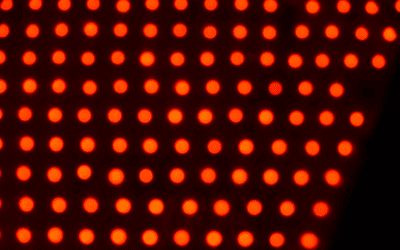If you suffer from headaches or migraines, you are not alone. Migraines are noted to be the second most disabling disease worldwide, affecting 1 in 10 people globally. Whether you experience an occasional migraine, a few days here and there, or half of your month is dedicated to migraine care, we understand how important treatment is. When you have a migraine, you may need to miss work or school, be unable to complete housework, or have to say no to social activities or family time. This has a profound impact on your quality of life and
your ability to do what you need to. Oftentimes, we hear from our patients that they feel guilty that they can’t do something or embarrassed that their symptoms are causing them to call off…again. Because of this, they may feel a strain on their relationships, finances, and overall productivity resulting in even more of these negative feelings.
In a 2001 World Health Report, migraines are the most disabling and expensive chronic disorder that is non-fatal. So if you’re in this category you have probably tried several different things, medication being one of them. In our reactive and pharmaceutical-based healthcare system, doctors generally prescribe medication as a first line of defense.
Let’s get something straight right away. The research shows migraine medications, both preventative and analgesic, don’t work for 50% of migraine sufferers. There is a time and place for them, but that data indicates a reduction in frequency, not a cure. In some cases, the side
effects can be just as impactful on your quality of life as the migraine itself. There are 10 classes of migraine medications and within these classes, there are dozens of drugs doctors will prescribe. Let’s go over these potential options, as well as their side effects, and provide insight on a non-medication-based route.
Over the counter:
Starting with the basics, there are over-the-counter analgesics everyone knows: Ibuprofen and Tylenol. We often hear from our patients that Tylenol doesn’t ever seem to touch migraine pain. We also know that consistent long-term use of both Tylenol and Ibuprofen can cause liver and kidney damage, while Ibuprofen may also increase your risk of stomach or intestinal ulcers. Recent data also suggest that long-term ibuprofen use may increase your risk of stroke and even have an impact on your cardiac health.
Triptans:
Moving on to another common category – Triptans. Triptans work by stimulating serotonin to reduce inflammation, while also constricting blood vessels and increasing blood pressure. There are warning labels on these that state they can increase blood pressure to dangerously high levels. Sometimes an EKG of your heart may be needed if you use it long-term to make sure your heart continues to function properly.
Ergots:
Then we’ve got Ergots. Like above, Ergots also constrict blood vessels, but listed under their common side effects are numbness, tingling, weakness, dizziness, spinning sensation, nausea, vomiting, or swelling or itching in any part of your body. Do any of those sound familiar at all to symptoms of migraines? This is a prime example of potential side effects that may be just as bad, if not worse, than your normal migraine symptoms.
Anti-nausea:
Many people with migraines experience nausea and are prescribed medications to manage it. A very common one is Metoclopramide. This medication increases muscle contractions in the upper digestive tract, which speeds up the rate at which the stomach empties into the intestines. There is also a black box warning for this drug, which is the highest warning the FDA will issue and indicates potential dangerous side effects. Metoclopramide can cause Tardive Dyskinesia which is a permanent movement disorder, resulting in involuntary movements of the face, tongue, or extremities. Using it long-term or in higher doses can place you at a higher risk of developing this disorder. Many of our migraine patients fall under the category of long-term use due to chronic migraines.
Glucocorticoids:
Another option is a category called Glucocorticoids, like prednisone. Prednisone is a corticosteroid. It’s a big-boy anti-inflammatory. Sounds okay…maybe? However, it also suppresses the immune system. Prednisone is used to treat many different conditions, such as allergic disorders, skin conditions, ulcerative colitis, arthritis, lupus, psoriasis, or breathing disorders. Migraines are not listed. On top of that, their warning sticker states that steroids like this can weaken your immune system or lead to bone loss (osteoporosis).
Beta blockers:
Earlier, we discussed medications that increase blood pressure, but if that doesn’t work, let’s try decreasing blood pressure! Beta blockers like Propranolol do just that. Propranolol is mostly used to help heart attacks. Common side effects include: insomnia, fatigue, and general
weakness. When you’re dealing with migraines, fatigue and weakness can be big issues, so adding a drug with the same side effects may not feel as impactful.
Antidepressants:
While depression and anxiety rates can be higher among people who suffer from chronic migraines and headaches, antidepressants aren’t solely used for that. They are supposed to affect brain chemicals like serotonin which can also constrict blood vessels and reduce inflammation. Common side effects include: dry mouth, drowsiness, dizziness, dysgeusia (distortion of taste), weight gain, increased appetite, and last but not least, headache disorder. While of course not everyone will experience these side effects, the fact that headache disorders remain as one of the more common ones, makes it feel less than ideal for those struggling with migraines.
Opioids:
Okay, we’re getting a little desperate, so maybe let’s try some opioids. Unless you live under a rock, you probably know something about the opioid crisis . In 2021, an estimated 80,816 people in the U.S. died from opioid overdoses. (in 2019, this number was estimated to be
around 50,000). On top of those statistics, side effects of opioids include drowsiness, confusion, nausea, vomiting, headaches, and dizziness. Again, there’s got to be a better option.
Anticonvulsants:
Let’s try anticonvulsants, which decrease nerve impulses that cause seizures and nerve pain. They’re also used to treat bipolar disorder. Common side effects include: acute confusion, diplopia (double vision), blurred vision, nystagmus, drowsy, dizziness, ataxia, nausea, vomiting, and unsteady gait.
CGRP:
Okay, so on to the NEWEST (and of course, the most expensive) category that everyone is talking about: CGRP. CGRP (Calcitonin gene-related peptide inhibitors) may also be known by some of the following brands: Aimovig, Ajovy, and Emgality. CGRP occurs naturally in the body and is released during a migraine. It is a small protein that is highly prevalent in sensory nerves that supply the head and neck and is involved in pain transmission. They are considered a “preventative” and you get it 1x/month via injection. However, it is $575 per injection or $6,900/year. On top of that, only 50% of people get about 50% reduction in symptoms.
With all of that said, if you’ve made it this far, we’d like to present a non-pharmaceutical option to treat your headaches and migraines. Here at Novera, we specialize in taking a holistic approach to migraines and seeking out the root of the issue instead of providing a bandaid.
With the majority of our patients, we have found that tension in the upper parts of the neck and shoulders tend to be the untreated cause of their condition. Because of the massive amounts of nerves leaving the spinal cord in these areas, when tension is present or there is some level of movement dysfunction, it can result in referral pain to the head, eyes, ears, jaw, and neck. When we improve movement patterns throughout the joints and muscles of the neck and shoulders, we reduce the likelihood of that pesky referral pain that causes a migraine.
If this sounds like a good option for you or you want to give a holistic approach a shot, give us a call at Novera Headache Center at (719) 598-1010 to book an appointment.




